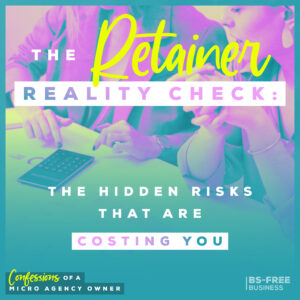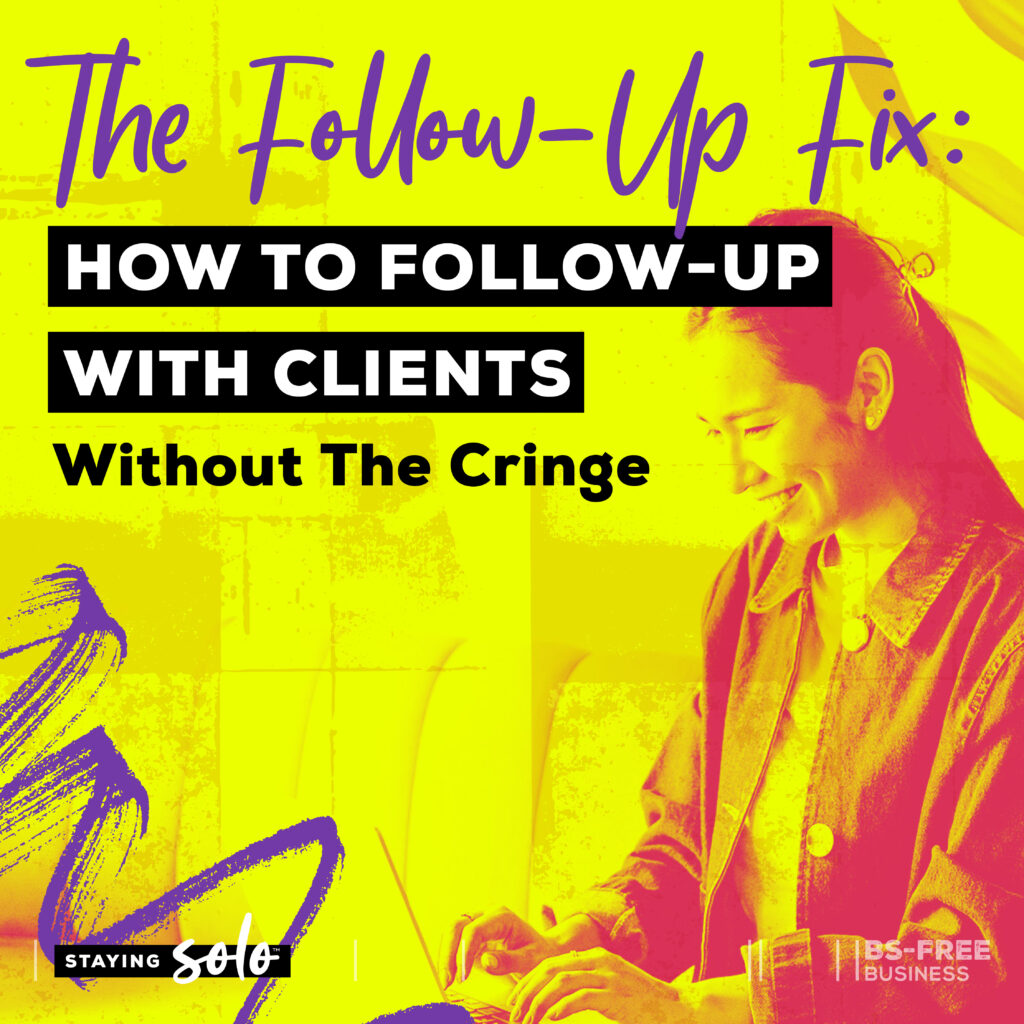
Search the site:
The Follow-Up Fix: How to Follow Up with Clients Without the Cringe
If following up with clients makes you feel like a clingy ex texting at 2 a.m., you’re not alone.
We’re all conditioned to think that following up is desperate. If our work was good enough, new clients would just come to us like magic.
Your clients are BUSY. They’ve got a million things on their plates, and guess what? Following up isn’t about validation or begging for their attention. It’s about leadership. They need you to take charge of the process, guide them through it, and make their lives easier.
In this episode, we’re getting real about following up with clients without feeling needy or annoying. I’ll show you why follow-up feels so awkward, how to fix that mindset, and break down the four most common types of follow-up so you can put this into practice.
The Real Problem: Why We Feel This Way About Follow-Up
Let’s talk about why follow-up feels so freaking awkward. It’s not just you. It’s ALL of us.
We’ve been conditioned to believe that if you were doing business right, clients would magically appear. That’s the myth.
And it’s very convenient for all those ‘manifest your dream clients’ celebrity entrepreneurs out there.
What’s really happening is that we’re all so damn worried about coming off as desperate or pushy that we skip follow-up altogether. Or we do it once and then back off.
Meanwhile, clients are out there drowning in emails, feeling overwhelmed, and—surprise—forgetting whatever their next step is.
Following up is about service. It’s about taking the lead and making it easier for the client. It’s not being pushy. It’s you being a damn professional.
Making follow-up a part of your process from the jump is how you remove the cringe factor. Because when it’s part of your client experience, it just feels like…good service. When follow-up is done right, clients appreciate it!
They’re not thinking, ‘Ugh, how desperate.’ They’re thinking, ‘Thank goodness they reminded me because I was drowning in my inbox.’ And they appreciate someone taking the lead instead of leaving everything in the air.
4 Types of Follow-Up (And How to Do Them Without Feeling Gross)
You might be thinking, ‘Okay, Maggie, I get it. Follow-up is good service. But what does that look like?’
And that’s the thing—follow-up can take many forms. It’s not one-size-fits-all, and what you say depends on where the client is in the process.
It’s also about the intention behind it. You’re not just popping into their inbox to say, ‘Hey, remember me?’ No, you’re leading the process, ensuring they have everything they need to move forward.
There are four types of follow-up for solo service business owners:
Following Up with Leads After a Call
This is your classic follow-up: contacting someone after a discovery call or initial inquiry. It’s not just about chasing someone down for a sale. It’s about being genuinely helpful and showing them you’re there to support their decision-making process. You’re making it clear that you’re available if they have questions or need clarification.
This type of follow-up is necessary if you don’t send proposals but need a touchpoint after a conversation with a potential client. Think of it as a recap where you put what you discussed, your pricing, and your booking information in writing. It’s the professional equivalent of saying, ‘Hey, here’s everything we talked about so you can decide with all the facts in front of you.’
And this isn’t pushy; it’s professional. If you’re not doing this, you’re missing out on opportunities. You can’t expect people to remember the details of your conversation. And you don’t want them to feel like you didn’t care enough to follow up. You want them to feel like they matter, like you want to work with them.
Doing this type of follow-up makes you look like someone who has their act together. Someone attentive, organized, and ready to help. It’s all about making their decision-making process easier, which is the ultimate form of good service.
I recently encouraged a client to do this type of follow-up; the first time she did it, she got a quick yes from the client.
Proposal Follow-Up
You’ve sent a proposal or quote, and then—crickets. Nothing. And if you’re like most of us, the panic starts. Did they hate it? Do they hate me? Did they find someone else? Are they sitting around, laughing at your email?
Nope. The reality is, they’re just busy. People’s inboxes are disasters. Things get buried, forgotten, or just mentally shelved for later.
Instead of spiraling into self-doubt, check in with something simple and friendly to see if they have any questions and have everything they need.
That’s it. That’s the magic. You’re not pushing. You’re not begging. You’re just being helpful.
When you do this, you’re making their decision-making process easier. People appreciate this as you’re showing you care about the relationship and them getting what they need. That’s how you position yourself as a true professional, not just another service provider.
Existing Client Follow-Up
Checking in with current clients is just good business. It’s not annoying—it’s proactive.
The reality is, just because you’re in the middle of a project or things seem to be running smoothly, it doesn’t mean your client doesn’t have questions, concerns, or thoughts they haven’t shared.
Whether it’s mid-project or during a slow period, staying on their radar keeps the relationship alive. It shows you care about how things are going, not just when it’s time to get paid.
If something’s off or needs tweaking, you catch it before it becomes a much bigger issue.
A simple ‘How’s everything going?’ or ‘Anything you need from me?’ can be the difference between a client feeling well-supported or feeling neglected.
When you reach out regularly, it feels like a natural part of your working relationship, not some awkward or forced interaction. Consistency builds trust and makes future collaborations so much easier.
The Post-Project Follow-Up
Just because a project is done doesn’t mean the relationship is over. This is where so many business owners drop the ball!
Following up after a project wraps up is crucial for a few reasons. First, it’s a chance to get valuable feedback. Did the client love the work? Is there something they’d like to be done differently next time
Second, it’s the perfect moment to ask for referrals—especially when the positive results are fresh in their mind.
And third, it’s about ensuring everything works the way it should. Maybe you completed the project and delivered everything, but what if they’re having trouble implementing it?
Checking in shows you care about the outcome, not just the payment. That’s how you turn one-off clients into repeat clients.
This type of follow-up sends a powerful message: You care about their experience. You care about their results. And that kind of attention to detail makes you someone they’ll want to work with again—and recommend to others.
The key to these follow-ups is making them feel like a natural part of your process. It’s not some awkward task you have to psych yourself up to do.
Making Follow-Up Feel Natural and Effective
The key to making follow-up feel natural and effective is to stop treating it like a chore and start treating it like a service.
When you approach follow-up intending to make things easier for your clients, it stops feeling like this awkward, uncomfortable task and starts feeling like part of how you do business.
Here are some practical and proven ways to do that.
Reframe Follow-Up as Service
You’re not being pushy; you’re being a pro. You’re reaching out to ensure your clients have what they need, whether that’s more information, clarification, or simply reassurance that they’re making the right choice.
When you see it as providing value, not chasing clients, it becomes a lot easier to do.
Create Simple Systems
Set up reminders, templates, or even automated sequences that can keep things moving without you remembering every little detail. The goal is to make follow-up feel effortless, like it’s just part of your regular workflow.
Be Consistent
Make follow-up part of your process from day one. It’s not something you scramble to do at the last minute. Instead, it’s baked into how you work. When clients come to expect that you’ll follow up, it stops feeling like a random interruption and starts feeling like good service.
Make it Personal
Don’t be afraid to show a little personality. Being human goes a long way. Whether it’s a casual email or a friendly voicemail, making your follow-up sound like it’s coming from a real person makes all the difference.
The goal is to be clear and helpful so your client feels supported, not confused.
You’re not just checking in for the sake of it. You’re showing that you’re there to support them and provide whatever they need to move forward. A simple, ‘I’m here if you have any other questions or need me to clarify anything,’ shows that you’re attentive, professional, and genuinely invested in their experience. And that’s the vibe you want to give off—helpful, not harassing.
Stop Overthinking and Start Following Up
Don’t overthink it. Your clients aren’t sitting around judging you for following up. They’re just busy. And you’re doing them a favor by making their lives easier.
Follow-up isn’t desperate, annoying, or something to avoid. It’s good service, plain and simple. And when you do it right, people like working with you more, not less.
When you approach follow-up as part of your client experience from the very beginning, it stops feeling like some random task you have to force yourself to do. Instead, it becomes just another way you provide top-notch service.
And if you’re not following up, you’re leaving money and opportunities on the table.
Here’s your action step: Take whatever follow-up you’ve been avoiding and just DO IT. Reach out. Make it happen.
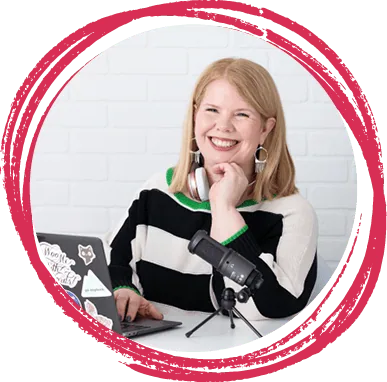
I’m Maggie Patterson (she/her), and services businesses are my business.
I have 20+ years of experience with client services, am a consultant for agency owners, creatives, and consultants, and vocal advocate for humane business practices rooted in empathy, respect, and trust.
Read or Listen to the Latest
Check Out These Posts
For Solo Business Owners
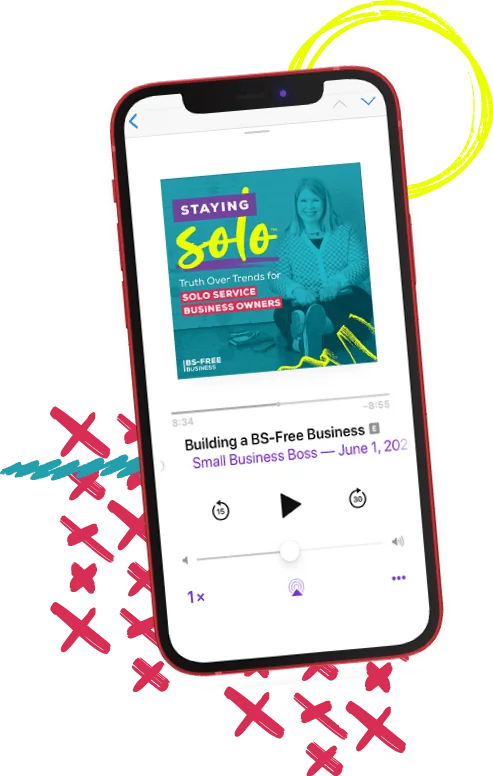
Growing a solo service business is tough.
It’s even harder when you’re bombarded with BS advice that steers you away from your values and why you started your business in the first place.
This is the podcast for solo creatives and consultants who want to remain as a team of one and have zero interest in the hustle and grind of typical business teachings.
Subscribe now and never miss an episode.
For Micro Agency Owners
Most podcasts for agency owners obsess over revenue growth as the ultimate success metric.
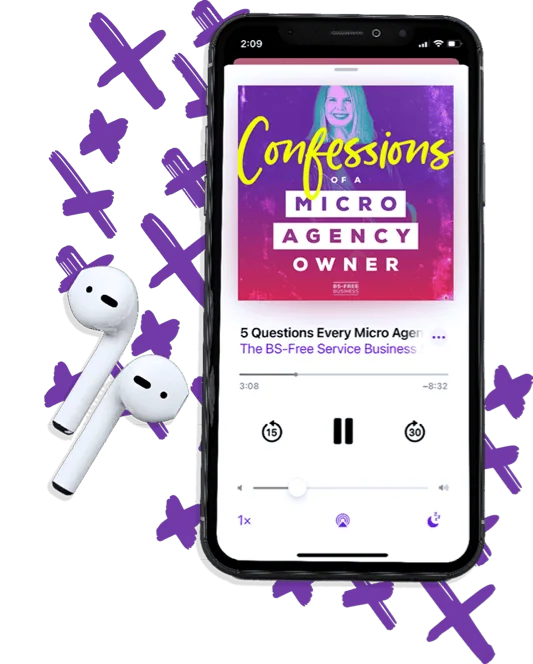
But here’s the truth: not everyone wants to make millions. Your goal might be to build a sustainable business that lets you have a life and doesn’t run you into the ground.
Join me as I spill my shameless confessions and share everything I’ve learned about building a micro agency that skips the BS of tired and typical agency teachings.
Follow Now on All Major Podcast Platforms
